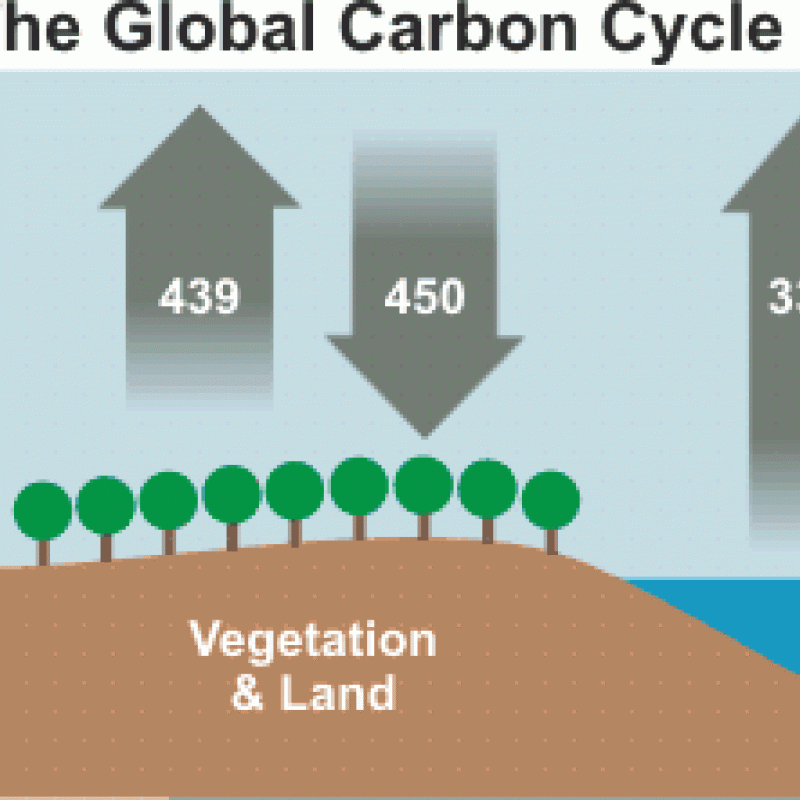How Can We Distinguish Naturally Produced Co2 From That Produced by Burning of Fossil Fuels?
![]()
Before the industrial revolution, the CO2 content in the air remained quite steady for thousands of years. Natural CO2 is not static, still. Information technology is generated by natural processes, and absorbed past others.
As you tin see in Figure 1, natural state and ocean carbon remains roughly in balance and have done so for a long time – and we know this considering we can measure celebrated levels of CO2 in the atmosphere both directly (in ice cores) and indirectly (through proxies).
Simply consider what happens when more than CO2 is released from outside of the natural carbon wheel – past burning fossil fuels. Although our output of 29 gigatons of CO2 is tiny compared to the 750 gigatons moving through the carbon cycle each year, it adds up because the land and ocean cannot absorb all of the actress CO2. About 40% of this boosted CO2 is absorbed. The rest remains in the atmosphere, and as a consequence, atmospheric CO2 is at its highest level in 15 to 20 million years (Tripati 2009). (A natural change of 100ppm normally takes 5,000 to 20,000 years. The recent increase of 100ppm has taken just 120 years).
Human CO2 emissions upset the natural balance of the carbon cycle. Man-fabricated CO2 in the atmosphere has increased by a third since the pre-industrial era, creating an artificial forcing of global temperatures which is warming the planet. While fossil-fuel derived CO2 is a very small component of the global carbon cycle, the actress CO2 is cumulative because the natural carbon commutation cannot absorb all the boosted CO2.


The level of atmospheric CO2 is edifice up, the boosted CO2 is being produced by called-for fossil fuels, and that build up is accelerating.
Both graphs from this folio are taken from Chapter two of the IPCC AR4 report.
Existent Climate goes in-depth into the scientific discipline and history of C13/C12 measurements.
The World Resources Institute have posted a useful resource: the Globe GHG Emissions Flow Chart, a visual summary of what's contributing to manmade CO2 (eg - electricity, cars, planes, deforestation, etc).
UPDATE: Human CO2 emissions in 2008, from fossil fuel called-for and cement production, was around 32 gigatoones of CO2 (UEA).
Source: https://www.che-project.eu/news/how-do-human-co2-emissions-compare-natural-co2-emissions
0 Response to "How Can We Distinguish Naturally Produced Co2 From That Produced by Burning of Fossil Fuels?"
Post a Comment